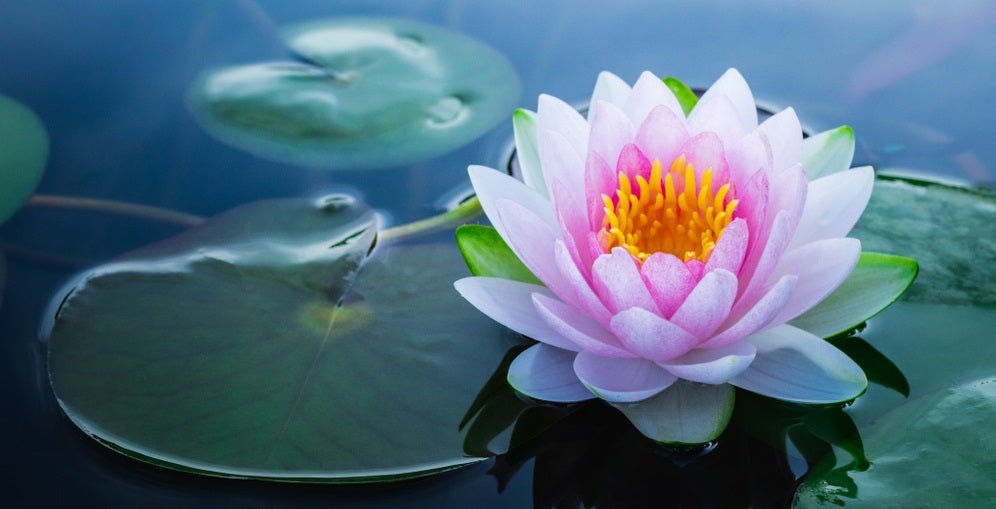Meaning of Lotus Flower: Everything You Should Know
By: Sawyer Wood
It’s no secret but mother nature is great at providing us with a remarkable wealth of beauty. However, lotus flowers are perhaps one of her most gorgeous and majestic offerings, coming in every hue from the purest white to the most vivid shades of pink and purple and everything in between. They’re certainly a sight to behold just on their own, but these aquatic flowers are still known for more than their pretty petals, layered with deeper meanings and great significance for a variety of different cultures.
Longing to know more about this or just want an upgrade to your general plant knowledge? We’ve got you covered. Read on for everything you need to know about the lotus flower - from the bare bones basics to its meaningful, more hidden symbolism.
Facts of the Lotus Flower
Like the majority of our most beloved plant species, the lotus flower has both a long and a very rich history. A perennial aquatic plant that not only manages to survive but actually thrive in rather murky (and mucky!) conditions, it has found a home all over the world for several thousand years, with evidence of the flower’s existence found even in ancient Egyptian hieroglyphics. Beyond those sandy dunes and the free-flowing Nile, though, the lotus can also be found in places like Australia, Africa, India, and Southeast Asia - the latter documented as far back as 250 BCE within Buddhist imagery and certain texts.
Curious why the lotus flower grows so well in these locations? You can actually thank their plentiful swamps and bodies of water for that! While swampy areas may seem inhospitable to such seemingly delicate plant life at first glance, they’re actually ideal for helping the lotus flower grow. After all, such environments are chock-full of nutrient-rich soil and mud; perfect for the lotus to take root in and use as a home-base before breaking the water’s surface during daylight hours.
Common Symbolism & The Lotus Flower
If that sounds like a strange process to you, you’re not alone. People have been puzzled and captivated by the lotus’ odd daily behavior since its discovery. Yet, the lotus flower’s unusual means for growth and development has spurred more than sheer curiosity or wonder. It’s indeed directly driven much of the symbolism tied to this day-blooming plant.
For instance, the lotus flower is commonly regarded as a symbol of purity. It stands for the perseverance and inherent goodness of the human heart/soul, of spiritual enlightenment and the possibility of progress - no doubt informed by the lotus’ ability to rise up out of muddy waters yet still emerge with beautiful, blossoming petals. For similar reasons, the lotus also frequently symbolizes the idea of resurrections, rebirth, and new beginnings. After a long day facing the sun, the lotus flower inevitably retreats back into the dark depths of the water. But much like us, they always re-emerge back into the light, ready to face new challenges and embrace further growth.
Purity and renewal are certainly two of the most agreed-upon symbolic meanings of the lotus. Although, they’re far from the only ones. On top of these, many see the lotus as representative of detachment from materialism or the materialistic world, wisdom, nature, fertility, rising up above ones roots while still honoring them, and the importance of being grounded.
The lotus is the national flower of Vietnam as well as India. In ancient Chinese cultures, the lotus flowers are considered to be a symbol of royalty and integrity
Want keep all of the above in mind as you go about your daily life? Maybe check into getting one of our lotus charms for yourself. Ideal for necklaces, earrings, bracelets, and whatever else your imagination can cook up, they can help you easily remind yourself of these important lessons or qualities all without having to make any sacrifices to style!
The Lotus Throughout Religion
We gave a pretty good rundown of the lotus flower’s basic symbolism. Still, there’s plenty more to cover, particularly when it comes to religion. You see, practically every spiritual tradition that’s existed within areas where lotus flowers blossom find a way to work it into their doctrine, lessons, or general shared knowledge.
For Buddhism, the lotus flower really functions as a kind of metaphor for life. It represents us, our struggles through the suffering of life, and the end goal that is overcoming it all. Buddhist scripture even makes use of the lotus’ figurative image to drive home their teachings, stating that there could simply be no flower without the presence of the mud it takes root in. Or, in other words, we would not be us without the challenges we face on the path to enlightenment. In Buddhism, many figures such as the Gautam Buddha who have attained enlightenment are seen holding the lotus flower.
Sikhism and Hinduism use the lotus in a similar way, utilizing it as an analogy to guide people onto the “right” life path by encouraging us to follow the lotus flower’s example. What does this mean? Well, essentially that we too should face the dirt and muck - the hardships - of life without allowing it to stain us. Additionally, we should also be welcoming cyclicality rather than hiding from it or fearing it. The dark times may scare us, but they’re ironically part of what gets us back to the sunshine above, not to mention what helps us appreciate its warmth and glow in the first place!
Meanwhile, religions such as Jainism choose to approach the lotus flower a little differently. Rather than deeply interweaving or incorporating its symbolism into their message, they more often use it as a form of identification. Since the blue lotus and red lotus are symbols for Nami and Padmaprabha respectively, some Jains will wear the lotus flower or use the image of it to distinguish themselves as a practitioner of the faith. It’s not widely done, but it does remain a staple to provide more visibility to Jainism or enable those who do so to easily find other people like them.
The Meaning of Lotus Colors
As we’ve mentioned a couple times, lotus flowers are definitely very colorful! Unlike some plants that primarily stick to green or some unbecoming shade of beige, you can pretty much find the entirety of the rainbow here and each color is seen to have a separate, individual meaning. Didn’t know that? Well, here’s a quick list to bring you up to speed!
- White: As you’d expect, white lotus flowers are closely interlinked with purity. They’re primarily the ones tied to religiosity, representing cleanliness of the body and soul, enlightenment, goodness, and faith. However, they also stand for much more including fertility, knowledge, beauty, and peace.
- Pink: Despite being pretty in pink, these colored blooms actually have little to do with sweetness or beauty. Instead, they’re most commonly used to signify the spiritual path to enlightenment, with a closed pink bud symbolizing someone still on the journey and an open one symbolizing that one has finally achieved nirvana or awakening.
- Yellow: The color of happiness, yellow lotuses do indeed symbolize joy and satisfaction, although there’s more to it than just that. Petals of this hue are said to stand for spiritual curiosity, intellectual interest, openness to experience, and hospitality, too.
- Red: Much like how those of us in the West typically view roses, red lotus flowers reference passion and love. It doesn’t just deal with the romantic variety, though! Red lotuses are closely associated with all kinds of affection and adoration, signifying compassion, devotion, generosity, and selflessness towards anybody you care about - romantically, platonically, or otherwise.
- Blue: We may sometimes say that we’re feeling blue, but blue lotuses are nothing to be sad about. In reality, finding one is rather rare, and is thought to be more of a comment on our worldly sides, symbolizing the pursuit of knowledge, wisdom, and the victory of accomplishing our aspirations.
- Purple: Similar in rarity to blue ones, purple lotuses are actually rather specific when it comes to their meanings. They’re traditionally mostly associated with Buddhism and are steeped in appropriate symbolism. Representing self-awakening and realization, balance, and harmony between our various parts - body and mind, our spiritual self and worldly self, etc - those seeking something profound would definitely be lucky to happen upon one of these!
As you can see, the lotus flower is full of meaning. This is why many people like to add a lotus flower charm to their jewelry.





























![Gold Filled Beaded Ring, Gold Silver Stacking Ring, Hammered Bead Ring, Gold Dot Ring Midi Ring Gold Filled Flat Beaded Ring Minimalist [30] - HarperCrown](http://www.harpercrown.com/cdn/shop/products/gold-filled-beaded-ring-gold-silver-stacking-ring-hammered-bead-ring-gold-dot-ring-midi-ring-gold-filled-flat-beaded-ring-minimalist-30-568879.jpg?v=1634159908&width=2048)
![Gold Filled Beaded Ring, Gold Silver Stacking Ring, Hammered Bead Ring, Gold Dot Ring Midi Ring Gold Filled Flat Beaded Ring Minimalist [30] - HarperCrown](http://www.harpercrown.com/cdn/shop/products/gold-filled-beaded-ring-gold-silver-stacking-ring-hammered-bead-ring-gold-dot-ring-midi-ring-gold-filled-flat-beaded-ring-minimalist-30-638411.jpg?v=1634159908&width=2048)




